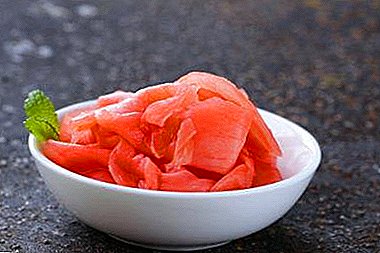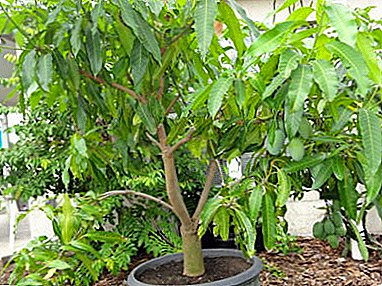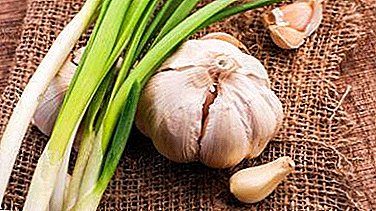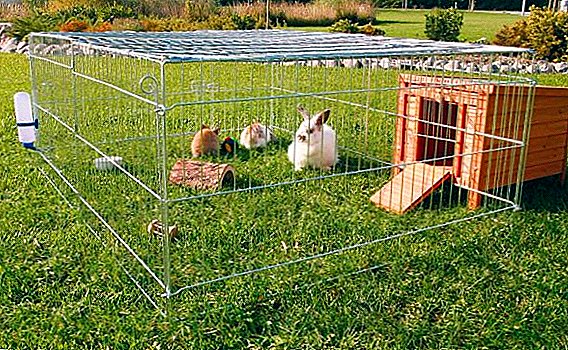 There are several ways to keep rabbits at home, and increasingly experienced breeders choose aviaries as homes for these animals. Consider why the cages have become so popular, what are the pros and cons of such content and how to build such a house with his own hands without much hassle.
There are several ways to keep rabbits at home, and increasingly experienced breeders choose aviaries as homes for these animals. Consider why the cages have become so popular, what are the pros and cons of such content and how to build such a house with his own hands without much hassle.
Pros and cons of captive content
Like any other way of keeping animals, the aviary has its advantages and disadvantages, which need to be considered in more detail in order to finally decide whether this option is right for you or better to find another one.
The advantages of keeping animals in cages include:
- lower material costs in the construction of housing compared to the cellular content;
- saving time for maintenance and cleaning;
- ease of feeding the rabbits, as they are fed all at once, pouring food into the common feeder;
- the presence of a large space for movement, which has a beneficial effect on the health of rabbits;
- general care of females for the offspring, without separating the babies into strangers and their own, which allows to increase the chances of the young for survival;
- improving the general condition of rabbits, the disappearance of apathy, nervousness, anger, which has a beneficial effect on their growth.
 The disadvantages of captive content include:
The disadvantages of captive content include:- high probability of death of all animals in the event of infection, as the rabbits are in contact with each other, infecting each other;
- partial coarsening of meat, which occurs due to more intensive development of muscles due to increased activity of animals;
- the red color of meat, which is not as valued as the marble color of rabbits in cages;
- high probability of fights among males due to females or territory, which often leads to deterioration of hides or unsuitability for mating.
Did you know? In the wild, the average life expectancy of rabbits is 1 year, and at home animals can live to 8-12 years.
Types of aviaries
Rabbit enclosures can be:
- single tier;
- bunk;
- three-tiered;
- with access to the pit;
- warmed winter;
- with separate feed compartment;
- with separate uterine compartment;
- for sukrolnykh rabbits;
- for ordinary content.

Keeping and feeding rabbits in the aviary
If a special aviary is built for the habitat of rabbits, the housing conditions must be appropriate, therefore, consider the particularities of the care and feeding of animals in such conditions.
How to care
Caring for rabbits, above all, is a regular cleaning of the enclosure from feces and food debris. When keeping rabbits in an open-air cage, it is necessary to clean the area at least once a week, removing the top layer, which the animals have already tamped down due to active movements.
Today there are different ways of keeping rabbits. Learn how to build a rabbitry correctly, how to make cages using the Zolotukhin method, as well as a shed for rabbits with your own hands.
Cleaning consists not only in removing feces and food debris from the floor, but also in cleaning the feeders, watering cans, and the walls of the houses. General cleaning should be carried out once a month along with the disinfection of the room. Such cleaning consists in the complete mechanical removal of the underlay, then the cage is first disinfected using the firing method, which allows to destroy almost all sources of infection.
The subsequent stage of disinfection is to use "Dezavid" or "Creolina", which must be sprayed onto the surface until they are completely moist, which will allow the tool to penetrate into the gaps and destroy all the infection. After thorough cleaning and disinfection, clean, dry litter in the form of sawdust or straw is poured on the floor.  Pay attention to the health of animals: regularly give them for the prevention of special drugs from worms to avoid infection. A good gentle suspension is "Shustrik", it is given to animals at the age of 3 weeks. From helminths it is recommended to solder and females before mating to avoid the possibility of infection of future offspring.
Pay attention to the health of animals: regularly give them for the prevention of special drugs from worms to avoid infection. A good gentle suspension is "Shustrik", it is given to animals at the age of 3 weeks. From helminths it is recommended to solder and females before mating to avoid the possibility of infection of future offspring.
There are also folk methods of preventing worms, which consist of the use of herbs - wormwood, tansy and yarrow, allowing to reduce the possibility of infection.
Important! If you clean the area less often, the risk of developing dangerous microorganisms increases, which adversely affect the health of animals.
In the period around the females are deposited in separate cells to provide them with a special diet and tranquility, as the animals during this period become more aggressive, their feelings become aggravated, they see a threat to their babies in everything.  As mentioned earlier, males can react quite aggressively to each other, therefore, especially ardent fighters are recommended to be set aside and kept separate from others.
As mentioned earlier, males can react quite aggressively to each other, therefore, especially ardent fighters are recommended to be set aside and kept separate from others.
What to feed
The correct diet for rabbits should consist of green, coarse, juicy and concentrated feed.
Green foods form the basis of the diet in the summer, used from spring to late autumn. Such feeds consist of wild-growing herbs, seeded, grain, leguminous and leguminous grasses, vegetable tops, and kale. It is forbidden to give rabbits tomato and potato tops.
It should be borne in mind that beet tops can act as a laxative, so it is given gradually with the addition of forage with a fixing effect - yarrow, leaves and branches of oak, alder.  A quarter of the diet of rabbits should consist of a roughage containing fiber. It is necessary for good digestion. Hay, tree branches, and also flour made from hay and grass are used as coarse food. Can not be used for feeding rabbits branches of bird cherry, elderberry, apricot and wild rosemary.
A quarter of the diet of rabbits should consist of a roughage containing fiber. It is necessary for good digestion. Hay, tree branches, and also flour made from hay and grass are used as coarse food. Can not be used for feeding rabbits branches of bird cherry, elderberry, apricot and wild rosemary.
The best time for harvesting the branches is the beginning of summer, at which time the maximum concentration of nutrients is reached. In winter, rabbits are offered spruce, pine, fir, cedar, juniper branches as natural vitamins.
Did you know? Female rabbits have a forked uterus and can bear at the same time. 2 offspringthat were conceived at different times from different males.
Juicy feed form the basis of the diet from the beginning of frosts, at this time, instead of green fodder, rabbits are given roots and silage. In the succulent feed concentrated large amounts of vitamin B, but the minimum amount of protein and fiber. Succulent feeds are also very useful for bunnies who feed their offspring, they produce better milk from such foods.  Juicy feeds that can be given to rabbits are presented:
Juicy feeds that can be given to rabbits are presented:
- carrots - it is given in its raw form, cut into pieces or whole;
- potatoes - give in the boiled form mixed with bran or compound feed;
- cabbage - boiled;
- sugar beet, fodder beet - fresh or boiled;
- zucchini fodder - fresh;
- pumpkin - raw or boiled.
Important! The netting net is better to purchase dyed to prevent oxidation of the enclosure, as the unpainted mesh has a small service life.
If you increase the amount of concentrated feed in the diet, this leads to better growth of individuals and to increased milk production in nursing females. The amount of concentrated feed in the diet of adults should be 30-40%. The concentrated feeds that can be given to animals include grain, oats, corn, barley, wheat, peas, lentils, beans, soybeans.  We should not forget about vitamins that need to be added to the diet of rabbits in the winter. In order to fill the need for vitamins A and D, fish oil in the amount of 1 g per head is injected into the diet of rabbits for adults, 3 g per head for rabbits during feeding and lactating, and for rabbits 0.5 g per head.
We should not forget about vitamins that need to be added to the diet of rabbits in the winter. In order to fill the need for vitamins A and D, fish oil in the amount of 1 g per head is injected into the diet of rabbits for adults, 3 g per head for rabbits during feeding and lactating, and for rabbits 0.5 g per head.
Proper nutrition for rabbits is necessary. We advise you to find out when and how to feed eared animals at home, as well as consider the feeding habits of rabbits in winter.
In winter, animals need additional amounts of vitamin E, as there is a lack of green fodder in the diet. To compensate for the lack of this vitamin, animals are given germinated grain, baker's yeast or high-quality hay. Bone meal, bone ash and chalk are considered good natural vitamin supplements.
Compulsory mineral supplement, which is given to rabbits, is table salt: young animals are given 1 g per day, adults - 1.5 g. During the fattening process, the salt concentration is increased and 3 g per head are given. 
How to do it yourself
Often, for keeping rabbits in an open-air cage, they make their own buildings, since it is much cheaper than buying a ready-made dwelling. It is easy to build an aviary, but in order to prevent serious mistakes, consider a detailed step-by-step instruction.
Design and dimensioning
Before proceeding to the construction of the aviary, you must first calculate the area that will be used for the aviary, based on the number of individuals. Each rabbit must have enough space, so allocate at least 1 square meter per head. m
To protect animals from uncontrolled intercourse, the males are allocated a separate fenced site. It is also necessary to select the area where the insulated houses will be located. The feeder can be installed alone, but it should be long enough, and the drinkers should be installed several and placed in different corners of the enclosure.
Familiarize yourself with step-by-step instructions for making troughs and drinking bowls for rabbits with your own hands.
The length of the feeders and drinkers should be sufficient so that at the same time all individuals can fit near them during the meal. 
Materials and tools
For the construction of the structure, it is necessary to choose the right materials and tools, so we will find out in more detail what is needed:
- chain-link 1.5 m wide;
- support columns of timber, 5 × 5 cm or 10 × 10 cm, you can use a metal frame;
- linseed oil or lube oil for coating the tips of wooden beams;
- board for the construction of small houses, which will serve as a refuge for animals;
- mineral wool for structural insulation;
- plastic film for waterproofing;
- roofing material or professional sheet for the roof;
- concrete for the floor;
- sand;
- reinforcing mesh;
- expanded polystyrene or expanded clay;
- hammer, nails, shovel.

Step by Step instructions
After purchasing all the materials you can proceed to the construction of the aviary. Detailed instruction consists of several stages of work.
Installation of supports and floor creation
The actions at the first stage have their own nuances:
- Rabbits are prone to digging land and building tunnels. In order to avoid such a situation, it is recommended to fix the chain-work into the soil to a depth of 1 m.
- The floor of the future enclosure should be poured with concrete, not less than 5 cm thick. The concrete solution is made in proportion: 5 parts of crushed stone, 3 parts of sand, 1 part of cement.
Agree, one of the main stages of the construction of the dwelling for rabbits is the creation of the bottom of a mini-room. Read about what floor to choose for rabbits in a cage and how to make it.
Instructions for pouring the floor:
- Initially, you should dig a pit at a depth of 35 cm.
- The bottom of the pit is covered with coarse sand, so that the layer thickness is 5 cm.
- At the bottom lay the bars, which are covered with reinforcing mesh.
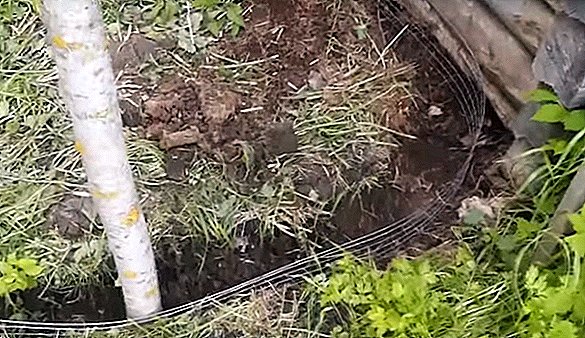
- Above the structure is poured concrete solution with a thickness of 5 cm.
- When pouring the floor, make it slightly tilted, no more than 10 °, so that the excess water leaves the enclosure on its own.
Instructions for the construction of an aviary:
- The foundation pit, after being enclosed with a net-rabbit, should be covered with soil.
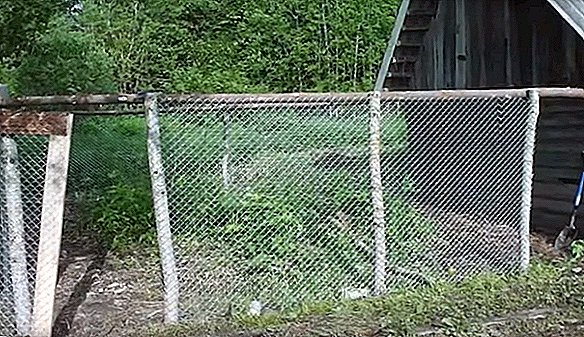
- Then it is necessary to install the pillars so that the distance between them is no more than 3 m. Under the pillars they dig out pits 50 cm deep.
- The bottom of the pits is filled with fine gravel, after which they install supports and fill everything with concrete and tamp.
- The supporting structure is connected to the crossbar, which is installed along the edge of the concrete floor.
Video: rabbit enclosure
Build houses
On the territory of the aviary establish separate houses for the habitat of rabbits:
- On one side of the aviary, at a distance of 80 cm from the grid-chain-link, dig holes.
- Opposite the support pillars, in the pits, install small racks to match the height of future houses.
- Racks tied lower strapping in a height of 15 cm.
- To equip the future floor, the free space that emerged between the construction of houses and concrete is recommended to be filled with expanded clay.
- Next, the formation of the upper trim, the design is divided into separate rooms using jumpers. At least 2 separate rooms are being built where females and males will live.
- The resulting structure inside is encased with boards to get the front and rear walls.
- Doors are installed on the front wall so that animals can enter.
- The resulting walls are sealed with mineral wool, then make the second layer of plating using boards.
- The roof is also mounted with a slight slope, so that it does not linger moisture. The roof is insulated with roofing material or professional sheet.
- After the house for rabbits is ready, the aviary is covered with a net.

Peculiarities of winter maintenance
In the winter, keep rabbits in aviaries is quite problematic. With the onset of cold weather, animals are recommended to be relocated to more comfortable conditions, for this they recommend choosing a warmed, non-windy room, preferably with heating.
In such a room, the floor must be at least 15 cm above the ground level so that animals do not freeze. Additionally, it is insulated with straw, which is poured with a thick layer.
Important! If a roof is built on top of the structure, then the supports are made high so that it is more convenient to carry out cleaning and disinfection.
It must also be remembered that the rabbits in the room need good ventilation and lighting. The room itself should be with windows so that sufficient amount of sunlight comes through them. High-quality ventilation is necessary in order to expel all odors.  Strong frost is especially badly tolerated by young individuals, which must be relocated to a heated room, and if there is no such possibility, then all youngsters are slaughtered.
Strong frost is especially badly tolerated by young individuals, which must be relocated to a heated room, and if there is no such possibility, then all youngsters are slaughtered.
In order to properly organize the care and maintenance of eared animals, it is necessary to become familiar with all the subtleties of breeding rabbits at home and also find out the advantages and disadvantages of breeding rabbits at the dacha.
Thus, keeping rabbits in cages makes it much easier to care for these animals and saves money on the construction or purchase of a large number of cells. In order for the animals in the aviary to feel comfortable, it is necessary to take into account the basic nuances in the construction of rabbit dwellings in accordance with the recommendations given in this article.





